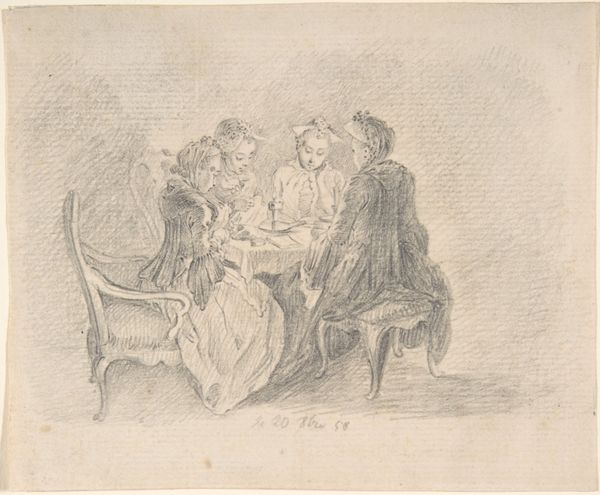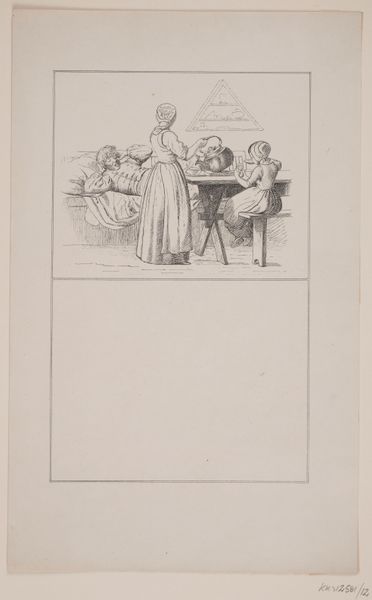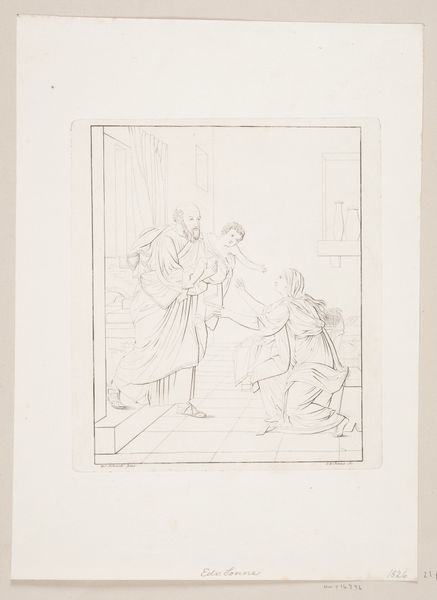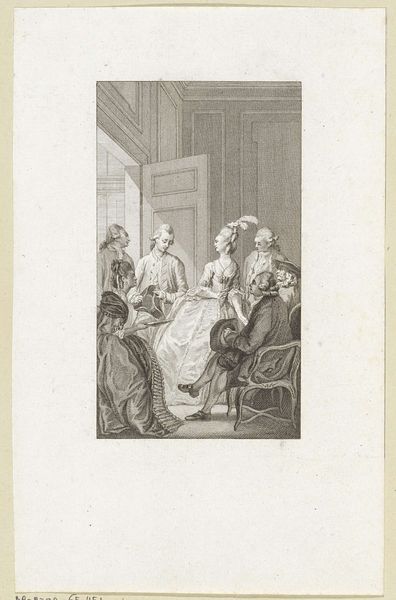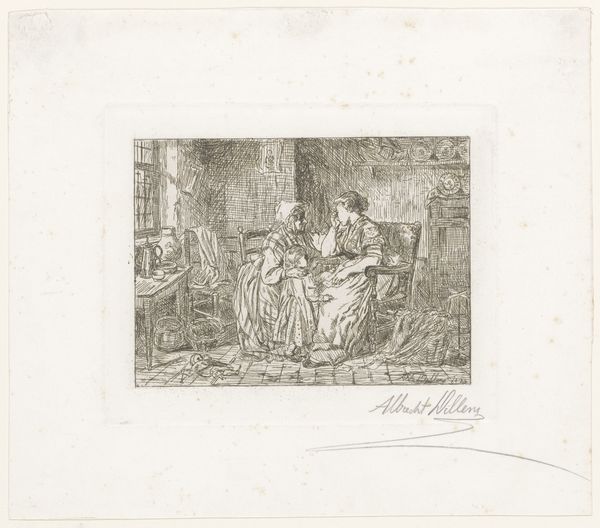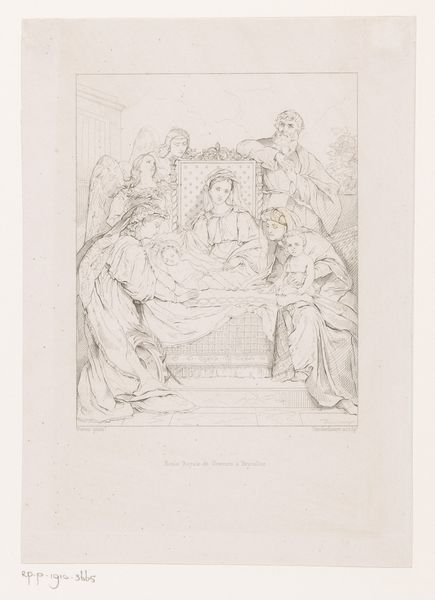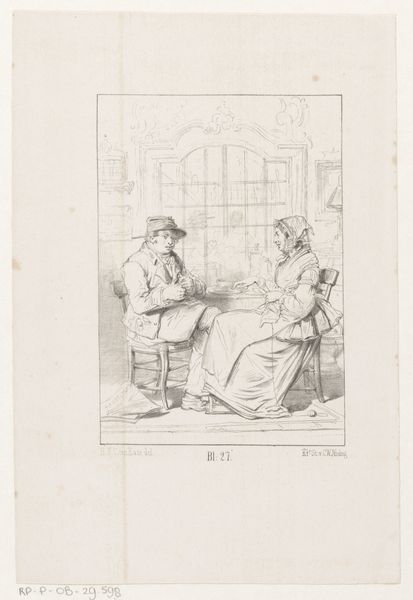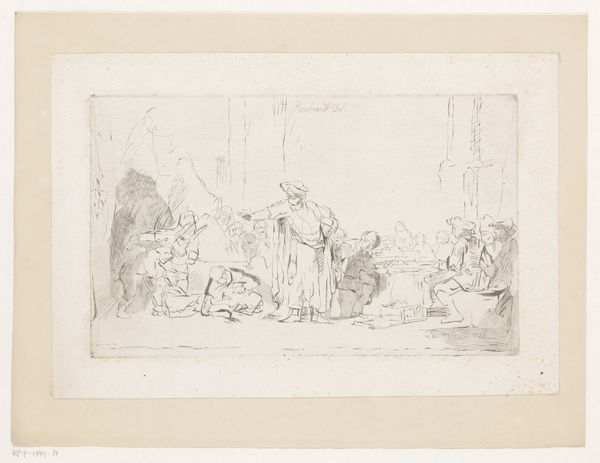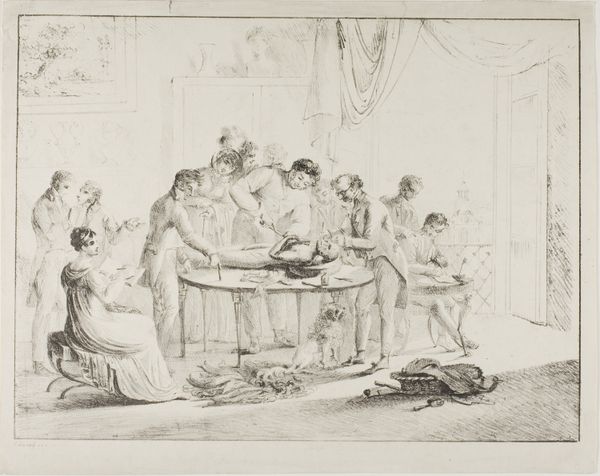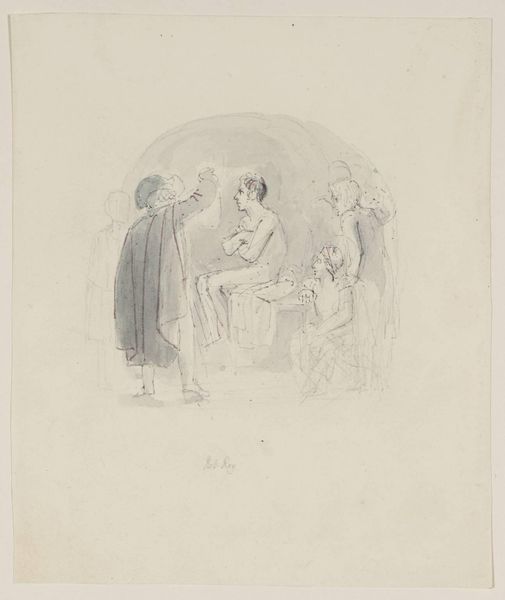
Dimensions: height 246 mm, width 164 mm
Copyright: Rijks Museum: Open Domain
Editor: This pencil drawing, "Two Women Embracing" by Herman Frederik Carel ten Kate, feels very intimate despite depicting a whole group of people. What strikes me most is the intense detail on the fabric of the tablecloth juxtaposed with the relatively simpler rendering of the figures. How do you interpret this choice of materiality? Curator: It’s crucial to recognize that this piece emerges from a specific historical context, between 1832 and 1891. Considering the availability and cost of different materials during this period, and that this is a drawing, one might examine the type of pencil used – the lead composition, its source – as directly impacting the artist's ability to achieve that level of detail. Editor: So you're saying the emphasis on the tablecloth might be less about artistic intention and more about the inherent properties of the materials and how accessible they were? Curator: Precisely. What were the social conditions and available resources influencing Ten Kate’s practice? He perhaps chose to highlight textiles, commenting on their growing prominence in domestic settings during the rise of industrial manufacturing and availability of commodities to decorate one’s home. Look closely at how light interacts with the graphite on paper – where does he invest labor and how might that choice tell us more about contemporary Dutch life at the time of the drawing’s creation? Editor: That's a completely different way of seeing it! I had focused on the emotion of the scene, but looking at it from a material perspective reveals a subtle commentary on production and consumption. Curator: Exactly. And consider who owned such furnishings, which in turn can speak to social stratification as it relates to labor. Understanding that can drastically alter our emotional read of the piece. Editor: It's amazing how much history can be revealed just by analyzing the materials. It enriches the experience far beyond simply admiring the scene. Curator: Indeed. This is a case study in reading art as a cultural artifact, one deeply embedded within its material conditions.
Comments
No comments
Be the first to comment and join the conversation on the ultimate creative platform.

